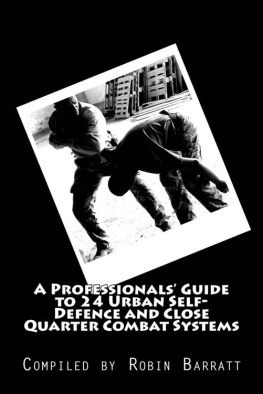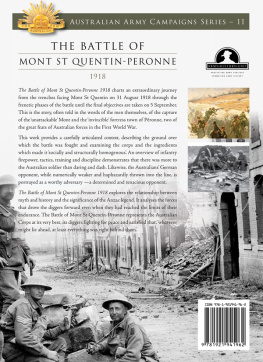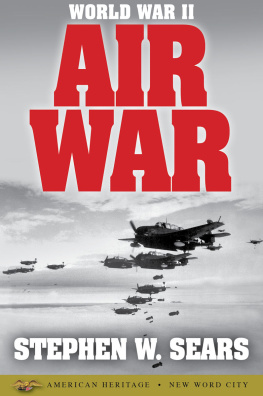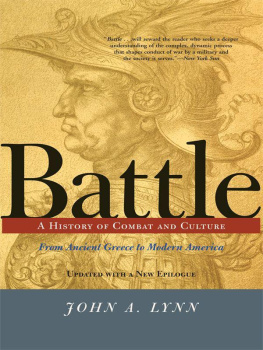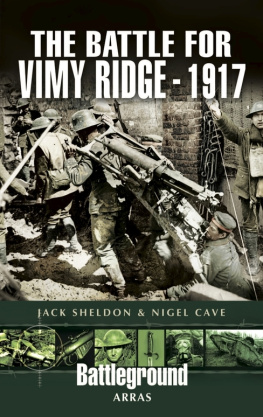This edition is published by PICKLE PARTNERS PUBLISHINGwww.picklepartnerspublishing.com
To join our mailing list for new titles or for issues with our books picklepublishing@gmail.com
Or on Facebook
Text originally published in 1989 under the same title.
Pickle Partners Publishing 2014, all rights reserved. No part of this publication may be reproduced, stored in a retrieval system or transmitted by any means, electrical, mechanical or otherwise without the written permission of the copyright holder.
Publishers Note
Although in most cases we have retained the Authors original spelling and grammar to authentically reproduce the work of the Author and the original intent of such material, some additional notes and clarifications have been added for the modern readers benefit.
We have also made every effort to include all maps and illustrations of the original edition the limitations of formatting do not allow of including larger maps, we will upload as many of these maps as possible.
THE BATTLE OF ASCHAFFENBURG: AN EXAMPLE OF LATE WORLD WAR II URBAN COMBAT IN EUROPE
By
Major Quentin W. Schillare. USA.
ABSTRACT
The Battle of Aschaffenburg examines the fight for the Main River city of Aschaffenburg in the closing weeks of World War II in Europe. It investigates the reasons why it took mobile and well supported elements of the U.S. Army ten days to subdue a defending German military force that was very much militia in character. After setting the battle in the context of Nazi Germany and the Aschaffenburg region just prior to the fight, the study takes the reader through the battle day-by-day describing the struggle and establishing the reasons why it was so prolonged.
The study groups the reasons for the successful German defense into three categories: terrain, operational factors and behavioral determinants. It establishes that the terrain favored the defenders with the town located across the Main River from the attackers so that they were forced into frontal assaults. Granting favorable defensive terrain, it was not until a numerically superior attacking force enveloped the urban defenses, under the cover of massive fire support, that the Americans gained the upper hand. The study further demonstrates the Impact of the concept of the will to win on military operations, even in a hopeless cause.
The Battle of Aschaffenburg addresses European urban combat in the context of World War II and concludes that the factors relevant to success then are still applicable. An attacker must carefully plan operations in urbanized terrain, follow doctrine and be physically and mentally prepared for a difficult fight.
CHAPTER 1 INTRODUCTION
The German situation map of the OberKommando der Wehrmacht ( OKW ) (the German Armed Forces High Command) on 25 March did not present a very encouraging picture. In the east the Soviet Army was advancing with four fronts , In Italy the Allied 15th Army Group was in the foothills of the Alps, and in the west the defenses of the Reich were ruptured and German forces were falling back everywhere. {1} Until the Allied crossing of the Rhine, the German plan had been to aggressively counterattack the Russian threat in the east to slow the drive on Berlin, while simultaneously holding the line in the west. {2} Now that strategy was in disarray and after six years of war the human, economic and psychological resources of Nazi Germany were nearly depleted.
The Allies in the west were as optimistic as the Germans were pessimistic. The Westwall (Siegfried Line) was overwhelmed and the Rhine River crossed. Allied units were advancing steadily all along the front. In mid-March the plan for the final destruction of German military forces in the west had been implemented. This plan envisioned the encirclement and destruction of German forces in the Ruhr by the US First and US Ninth Armies, and an all-out drive through the center of Germany to the Leipzig-Dresden area by the US First, Third and Ninth Armies, halting at the Elbe. Simultaneously, the British Second and the Canadian First Armies, protecting the northern flank, made a northern crossing of the Elbe and were dashing to the Danish border, white the US Sixth Army Group, protecting the southern flank, drove through southern Germany to Austria. {3}
Within this strategic context the forces of the belligerents fought the daily life and death struggles that make up the fabric of war. The Allies, especially the Americans, had vast superiority in men and materiel over their German adversary who was deficient in the wherewithal to fight a modern war. The von Rundstedt Offensive (The Battle of the Bulge) had depleted the last strategic reserves available to the Wehrmacht. What faced the Allies were remnants of once-powerful Wehrmacht units, with inferior manpower and inadequate equipment. East of the Rhine the Germans had only 60 under-strength divisions to oppose 85 well-equipped Allied divisions supplied by the largest combat service support organization ever know in warfare. {4} Against this backdrop stands one of the small paradoxes that often occur in war, where a seemingly inferior defender resists a superior attacker.
Beginning on 25 March 1945, elements of four US divisions successively fought for ten days to capture the Main River town of Aschaffenburg, a part of the Wetterau-Main-Tauber Line, an integrated defensive line that ran for 120 kilometers in south-central Germany. {5} Combat Command Aschaffenburg (KKA from the German Kampfkommando Aschaffenburg) was an eclectic combination of soldiers and civilians drawn from replacement units, convalescing soldiers, hastily-mustered Volkssturm (home guard), police, civil defense and Nazi Party functionaries. Together they resisted battle-tested American infantry supported by tanks, engineers, artillery and fighter-bombers for much longer than expected.
The fight for Aschaffenburg was as bitter as it was prolonged. At least in the eyes of the attacker it was unnecessary and many US veterans of the struggle cannot understand why the defenders fought so hard for so long. {6} The central question of this study will be to answer that question, "Why did it take the Americans ten days to capture the city of Aschaffenburg in March and April 1945?" The study will examine the battle from the perspective of both the attacker and the defender, looking at the environmental, operational and behavioral factors that generated the combat power of each side, and supplied the will to employ it.
The battle and its outcome became relevant in late 1984, as an increased urban terrorist threat in Europe caused US military authorities in Aschaffenburg to investigate how the city could be defended from any threat. Because the area had been heavily defended in World War II, research into how it was done seemed a logical place to start. The results of that investigation led to this thesis.
Recounting the story of the battle is important today beyond its value as a combat narrative of WWII. Aschaffenburg had a wartime population of 38,000, about the size of many urban centers that the US Army may defend under its NATO commitment to Western Europe. The Battle of Aschaffenburg is significant today as an example of the techniques of military operations in urban terrain (MOUT). Much has changed in military operations in the past forty three years, but it will be the intention of this study to demonstrate that the fighting in the Spring of 1945 is as relevant today as it was when elements of the US Seventh Army faced Combat Command Aschaffenburg. If the US Army is to apply its AirLand Battle doctrine against the threat in Europe it will, very often, have to synchronize combat power in urban terrain to fight and-win .






